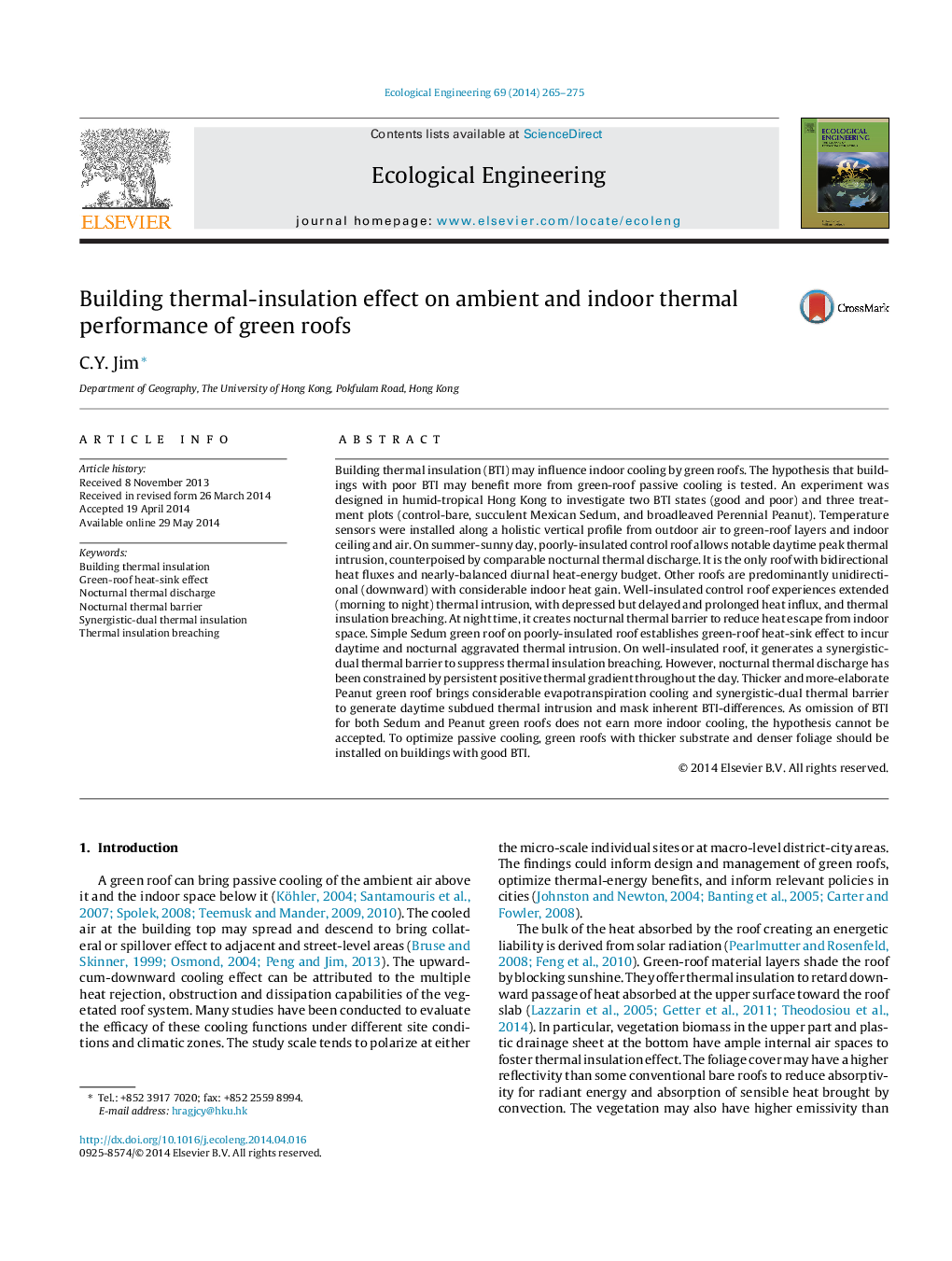| Article ID | Journal | Published Year | Pages | File Type |
|---|---|---|---|---|
| 4389402 | Ecological Engineering | 2014 | 11 Pages |
•Hypothesis of poorly-insulated roof facilitating green-roof passive cooling is tested.•Omitting building thermal insulation at Sedum roof permits massive thermal intrusion.•Green roofs nullify nocturnal thermal discharge from indoor and raise cooling load.•Sedum roof serves synergistic thermal insulation with building thermal insulation.•Herb roof brings subdued thermal intrusion regardless of building thermal insulation.
Building thermal insulation (BTI) may influence indoor cooling by green roofs. The hypothesis that buildings with poor BTI may benefit more from green-roof passive cooling is tested. An experiment was designed in humid-tropical Hong Kong to investigate two BTI states (good and poor) and three treatment plots (control-bare, succulent Mexican Sedum, and broadleaved Perennial Peanut). Temperature sensors were installed along a holistic vertical profile from outdoor air to green-roof layers and indoor ceiling and air. On summer-sunny day, poorly-insulated control roof allows notable daytime peak thermal intrusion, counterpoised by comparable nocturnal thermal discharge. It is the only roof with bidirectional heat fluxes and nearly-balanced diurnal heat-energy budget. Other roofs are predominantly unidirectional (downward) with considerable indoor heat gain. Well-insulated control roof experiences extended (morning to night) thermal intrusion, with depressed but delayed and prolonged heat influx, and thermal insulation breaching. At night time, it creates nocturnal thermal barrier to reduce heat escape from indoor space. Simple Sedum green roof on poorly-insulated roof establishes green-roof heat-sink effect to incur daytime and nocturnal aggravated thermal intrusion. On well-insulated roof, it generates a synergistic-dual thermal barrier to suppress thermal insulation breaching. However, nocturnal thermal discharge has been constrained by persistent positive thermal gradient throughout the day. Thicker and more-elaborate Peanut green roof brings considerable evapotranspiration cooling and synergistic-dual thermal barrier to generate daytime subdued thermal intrusion and mask inherent BTI-differences. As omission of BTI for both Sedum and Peanut green roofs does not earn more indoor cooling, the hypothesis cannot be accepted. To optimize passive cooling, green roofs with thicker substrate and denser foliage should be installed on buildings with good BTI.
